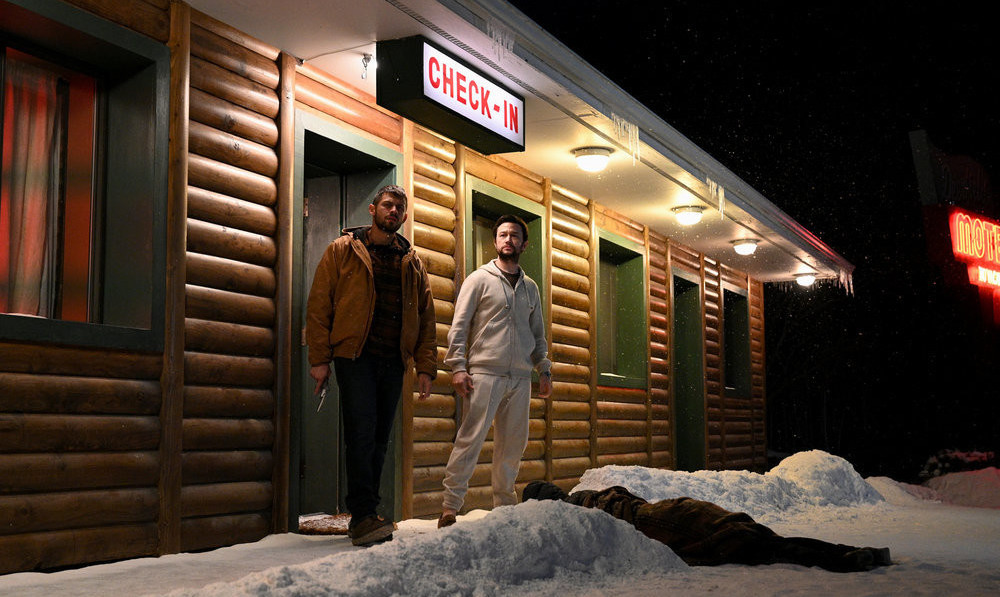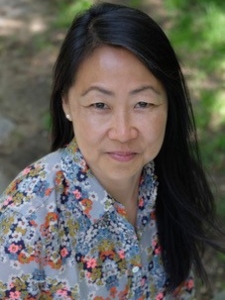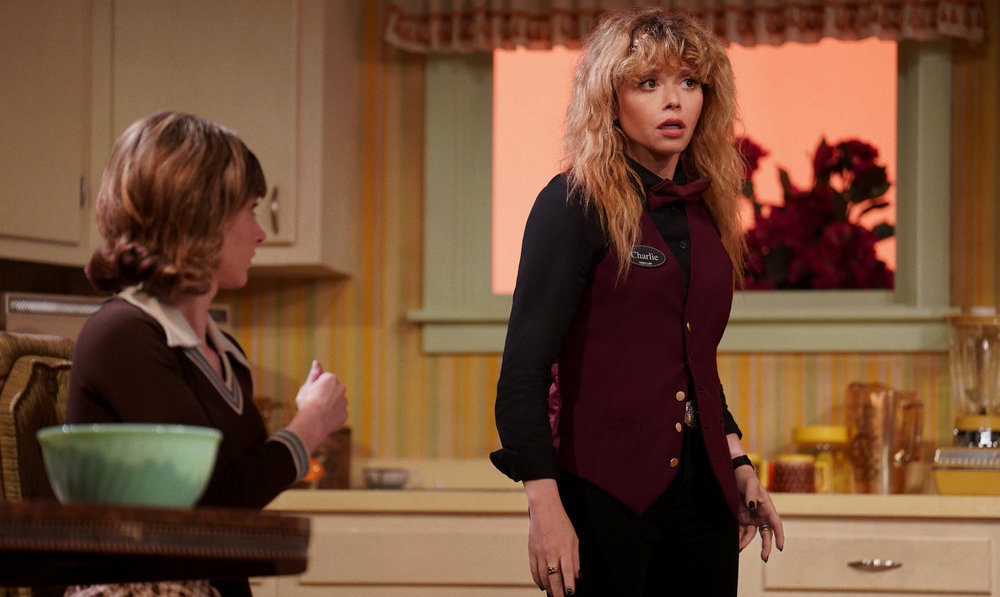
When cocktail waitress Charlie Cale flees her casino job, her journey takes her into mysteries across America. Poker Face, starring Natasha Lyonne and created by Rian Johnson, resurrects an earlier generation of television, when shows like Columbo brought a changing cast of guest stars to the airwaves.
Settings on the show range from a Texas barbecue pit to a Tennessee race track, testing the ingenuity of production designer Judy Rhee. Most of Poker Face was shot in the Hudson Valley north of New York City, on a schedule so tight that Rhee’s crews were working on as many as four episodes at a time.
Rhee’s career includes work on shows like Jessica Jones and Better Call Saul, as well as on several features. She spoke with Below the Line via Zoom.
[Note: This interview has been edited for clarity.]

Below the Line: Did you think of this as a unified series or as individual stories with different styles for each episode?
Judy Rhee: We approached this basically as 10 short films. Even though there’s the continuity of Charlie traveling throughout, she’s the only recurring figure outside of Cliff, Benjamin Bratt‘s role. So each episode was approached very differently and individually because Charlie was in a new environment with every plot. Each script had its own personality, a slightly different rhythm and tone. It was the beauty of the series, but also the challenge.
BTL: What did Rian Johnson, who created the show, want from you?
Rhee: He’s incredibly generous. He gave us a lot of leeway. In terms of specifics, the only feedback he gave was there were certain story points that he needed us to hit, whether it was visually or to support the characters. But there was no, “Well, the show has to look like this,” or, “Here’s what we want from each episode.” It was pretty open-ended. We got to figure out and discover as we were going along what was working for Charlie and the different characters she encountered.
BTL: Can you give an example of a story point you had to hit?
Rhee: The theater one [Episode 6, “Exit Stage Death,” with Ellen Barkin and Tim Meadows], which is one of the funnier episodes. The script had a lot of specific moments. Ellen’s up on a catwalk, she looks down, the camera looks up, and then she has to go from point A to point B.
All of her travel, all of Tim’s travel, had to make sense visually as well as with the layout of the set. The stage was all invented. Some [of it] was built, other parts were modified on a location. The theatrical set also had to serve certain camera angles. Where the light was going to fall, where the trap door was — all these bits and pieces we had to string together.
BTL: That must have been difficult to coordinate with the other departments.
Rhee: In terms of the overall series, the challenges were that our stages were limited in terms of size, and we were constantly leapfrogging. Either we were modifying an existing set or tearing it down and building a new one.
For “Exit Stage Death,” we were also prepping two other episodes and tearing down two episodes. We built the catwalk on one of our stages, but the actual theater set was on what served as our ancillary third stage. It was an abandoned event space in Newburgh that we built the theater into. It had an existing stage, a small one. We retrofitted it with a proscenium and wings.
Obviously, we looked for a real theater, but it didn’t exist in the way Rian envisioned. He wanted something spacious, but that still felt like a small dinner theater. It needed tables and a hallway that took you to a kitchen. Getting all those bits and pieces was the challenge of that episode.

BTL: What was your schedule like?
Rhee: I have to say it’s a good thing I’ve done a lot of commercials because this was like making a feature film every ten days with a commercial schedule.
We had outlines in the beginning and some complete scripts. We knew the big ones to prepare for, like the theater. We knew for episode two we needed to scout for desert locations. But at any given moment we were prepping two ahead in addition to the one that was up and coming to shoot. The crew was also wrapping the two episodes behind us, so we were all over the place.
BTL: How much was built? The series looks like it’s predominately real locations.
Rhee: We built most of it. I’m glad you thought they were locations because that means you bought into it. For instance, we shot episodes one and nine first. All the casino interiors were built in that Newburgh event space.
The casino, Adrien Brody‘s office, the casino floors because we needed two of them, the crow’s nest. For three, the barbecue and all its exteriors, the radio station, the bedroom. The kitchen we modified from an existing building, but we had to add a lot.
In [Episode] 9 with Joseph Gordon-Levitt‘s garage and the motel lodge, the tree hollow where Charlie is buried and the landscape around it was built on stage on a platform. We sculpted the interior of the hollow, sculpted out all the trees, and visual effects helped out with the surrounding background.
It took different approaches to figure out the best way to shoot each episode.
BTL: You shot Episode 2 in New Mexico last, correct?
Rhee: Actually, the last things we shot were the exteriors for Episode 1 in Laughlin, Nevada. For [Episode] 2, we built the Subway restaurant from scratch. The convenience store we modified from an existing tack shop. And we built the garage. All three structures had to have specific camera views because Rian was very specific about how he wanted to shoot each character’s point of view.
BTL: So you knew from the script you would need the Subway kitchen and doors?
Rhee: Correct. That episode didn’t change that much. We scouted early on, in California, Nevada, Arizona, and New Mexico. We ended up [shooting] outside of Albuquerque, because the other challenge was to have it feel like it’s in the middle of nowhere, but also have enough support for the crew and equipment to be brought in function daily. Rian initially had something specific in mind, the deserts of Southern California or the edge of Nevada. But it didn’t make sense to have the support crew two hours away.
BTL: What was the process like in Newburgh?
Rhee: I sit down with the location manager with whatever research or references I’ve done. We want to stay as close to the office and our stage as possible because of all the movement that has to take place. So, he starts in close and moves the radius out as we look for things.
BTL: For example, how did you find Tim Meadows’ mansion in Episode 6?
Rhee: That was outside West Point, a little further than we wanted but it needed to have a certain vista, a certain moneyed look you could catch with a quick glance. Again, they wanted very specific camera angles for that.
BTL: Newburgh can be a gritty town.
Rhee: I actually like Newburgh very much. There’s some great old architecture there. It has huge potential. It could be the next Kingston. You know it will be gentrified in the next five minutes.
Season 1 of Poker Face is now streaming on Peacock.





